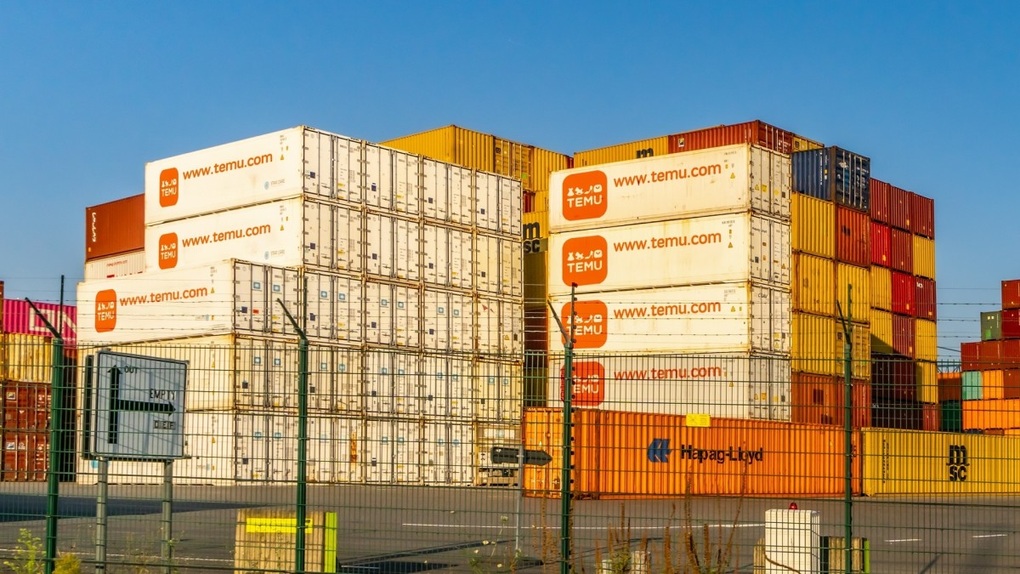Temu, which has reshaped the shopping habits of millions of American consumers with its incredibly low prices, was on the verge of shutting down its US presence. The Chinese e-commerce platform, with its explosive growth, has attracted a huge number of customers from traditional retail giants and Amazon.
But then, a policy "earthquake" happened.
The tariff "storm" and Temu's sudden brake
It all started in April when President Donald Trump announced a series of tough tariffs on Chinese goods. The two biggest blows were a 10% base tax on most products and, most importantly, the elimination of the “de minimis” rule.
For years, “de minimis” has been the golden ticket for platforms like Temu and Shein, allowing packages worth less than $800 to be imported duty-free into the US.
“De minimis” is the backbone of Temu’s business model, allowing it to ship billions of dollars of low-value goods directly from Chinese factories to American consumers without the burden of tariffs. Last year alone, U.S. Customs and Border Protection processed 1.3 billion packages in this way, worth a total of $64.6 billion.
When this regulation was lifted, small packages from China suddenly faced tariffs of up to 120% of their value, or even 145% depending on the postal service.
Skyrocketing costs forced Temu to make the difficult decision to suspend direct shipping from China to the US from May 2, and switch to processing orders through domestic suppliers. The trade war escalated when China retaliated with 125% tariffs on US goods. The market was in turmoil.
However, a temporary trade truce was signed in May and extended in August. Accordingly, both sides agreed to cool down: the US reduced the additional tariffs on Chinese goods to 30%, and in particular, the tariffs on small packages were adjusted to about 54%. Although still a burden, this was a precious "breathing space" and Temu did not miss the opportunity.
A quiet but calculated comeback
Since July, according to information from suppliers and partners, Temu has quietly restored its "full-package delivery" service - a model in which it will be responsible for most of the logistics and complex customs procedures.
As shipments resumed, parent company PDD Holdings pumped money back into aggressive advertising campaigns in the US, after a period of tightening spending. This “two-pronged” move showed a big determination: to regain lost market share and restore the loyalty of price-sensitive customers.
The decision to return was not an easy one. The suspension dealt a financial blow to PDD Holdings, sending second-quarter operating profit down 21% from a year earlier. Still, total revenue rose 7% to $14.5 billion, showing that demand for low-cost goods remains resilient even in an uncertain economic environment.

Temu has resumed shipping goods directly from Chinese factories to US consumers and increased its advertising budget in the market after Washington and Beijing reached a trade truce (Photo: Shutterstock).
So, why did Temu decide to “reappear” when the risks were still hanging over it? The answer lies in a deeper strategic perspective on the retail game.
Temu's move is not a gamble, but a reasonable step in the new context, according to Sheng Lu, a professor of fashion industry at the University of Delaware.
First, the price war has entered a new chapter. As of August 29, the “de minimis” tax exemption will be officially abolished for all countries, not just China.
“This means that even major US brands and retailers importing from other countries are forced to significantly raise their prices,” Lu analyzed. “As everyone has to bear the additional cost of tariffs, the competitive price pressure on Temu and Shein actually decreases.”
In other words, when everyone else is getting more expensive, Temu's "cheap" status is still relatively preserved.
Second, the core advantage of the business model is still there. Mr. Lu said that even with tariffs, shipping directly from factories in China is still significantly cheaper than the huge costs of maintaining warehouses, managing inventory and operating logistics in the US. “This is still a viable and cost-effective option for companies like Temu,” he said.
Moreover, Temu seems to have learned a valuable lesson from its rival. It is said that Temu has closely observed how Shein, with its cross-border logistics subsidiary, has maintained profitability in the US despite the tariffs. This has prompted Temu to invest in building its own logistics infrastructure rather than relying on third-party partners that are vulnerable to customs scrutiny.
This is a strategic move to build an economic "moat", enhancing control and resilience against future fluctuations.
What future for Temu and consumers?
Temu’s return is bringing mixed signals. One supplier in Zhejiang said the resumption of direct shipping has helped “increase coverage and improve sales.” But another seller in Guizhou was more cautious, saying purchasing power has yet to recover to its pre-tariff heyday.
Temu’s comeback isn’t just a flip of a shipping switch, it’s a strategic repositioning in a business environment that’s changed forever. The giant is betting that, even with the added tariffs, its lean, factory-direct model will still be attractive enough to win over consumers looking for the best deal.
The current trade truce is temporary and could change at any time. Temu’s gamble could pay off brilliantly, returning them to growth, or it could be swamped by a new wave of tariffs. But one thing is for sure: the battle for the American consumer’s wallet is still fierce, and Temu’s return promises to make it more interesting than ever.
Source: https://dantri.com.vn/kinh-doanh/temu-lang-le-tai-xuat-tai-my-20250828210359393.htm




![[Photo] National Assembly Chairman Tran Thanh Man attends the VinFuture 2025 Award Ceremony](/_next/image?url=https%3A%2F%2Fvphoto.vietnam.vn%2Fthumb%2F1200x675%2Fvietnam%2Fresource%2FIMAGE%2F2025%2F12%2F05%2F1764951162416_2628509768338816493-6995-jpg.webp&w=3840&q=75)
![[Photo] 60th Anniversary of the Founding of the Vietnam Association of Photographic Artists](/_next/image?url=https%3A%2F%2Fvphoto.vietnam.vn%2Fthumb%2F1200x675%2Fvietnam%2Fresource%2FIMAGE%2F2025%2F12%2F05%2F1764935864512_a1-bnd-0841-9740-jpg.webp&w=3840&q=75)








































































































Comment (0)